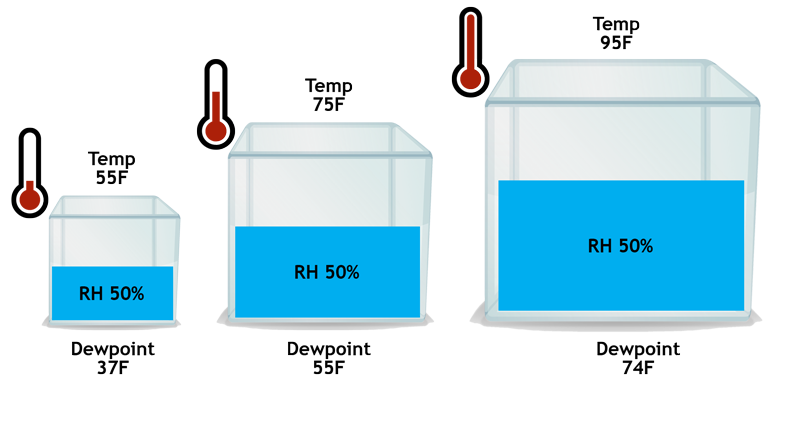
In this experiment, you will determine the dew point temperature in two different ways and learn more about what dew point actually means. This liquid forms by the condensation of water vapor that is near the surface of the glass. You can use dew point to understand what it “feels like” outside: a high dew point indicates that it will be muggy while a low dew point tells you that it will feel more dry.Ī way we experience this phenomenon in our everyday lives is when water condenses on the outside of a cold drink.During fall and spring, it can help them know if frost might form overnight and damage plants. Water dew-point measurements are also available using the same analyzer, using Michell’s ceramic metal oxide moisture sensor. Farmers and gardeners use the dew point to estimate how much water they need to give plants. Michell Instruments’ Condumax II Hydrocarbon Dew-Point Analyzer uses the Dark Spot technique which is a variation of the chilled mirror dew-point sensor to provide continuous and accurate measurements of HCDP.Meteorologists use dew point to predict the potential for storms as well as nighttime temperatures.The dew point temperature will never be higher than the air temperature dew point temperature will always be equal to or less than air temperature. Warmer air is able to store more water vapor than cooler air, so warmer air has a higher dew point temperature than cooler air. When the air temperature drops below the dew point temperature, condensation occurs, resulting in the formation of dew, fog, and/or clouds. In other words, the temperature at which relative humidity is 100%. Click here to see the Tallahassee weather forecast.Dew point is a value that is often included in a weather forecast, but what is it? Dew point is defined as the temperature at which air is fully saturated with water vapor. When one combines high dew points with warm temperatures, it can be a dangerous recipe for potential heat-related illnesses.Ĭopyright 2022 Storm Center. This is when the air almost feels heavy because of the moisture content of the atmosphere. In Florida during the summer months, it is not uncommon to find dew point numbers well into the 70s. Between 55 and 65 degrees, the air becomes muggy or "sticky." Using this example, it becomes clear to see why using dew point is the preferred way of properly demonstrating how much moisture is in the atmosphere at any given time.ĭew point numbers tend to be comfortable at 55 degrees or less. This would give a relative humidity value of only 50%. What happens if we change the air temperature and dew point and how would it impact relative humidity values? Let's say the air temperature was raised to 80 degrees and the dew point was bumped to 60 degrees. For example, an air temperature of 30 degrees and a dew point of 30 degrees will give you a relative humidity value of 100%. Relative humidity fluctuates throughout the day and is highest during the morning hours because the air temperature and dew point tend to be close.

But why is dew point a better indicator for atmospheric moisture?

"The dew point is the temperature the air needs to be cooled to at constant pressure in order to achieve a relative humidity of 100%." This official definition is courtesy of the National Weather Service, and while it contains some technical verbiage, the bottom line is dew point is a more accurate measure of how much moisture is in the atmosphere. Looking for MORE trusted news? Subscribe to WFSU's Daily News to receive all the day's stories right in your inbox.


 0 kommentar(er)
0 kommentar(er)
